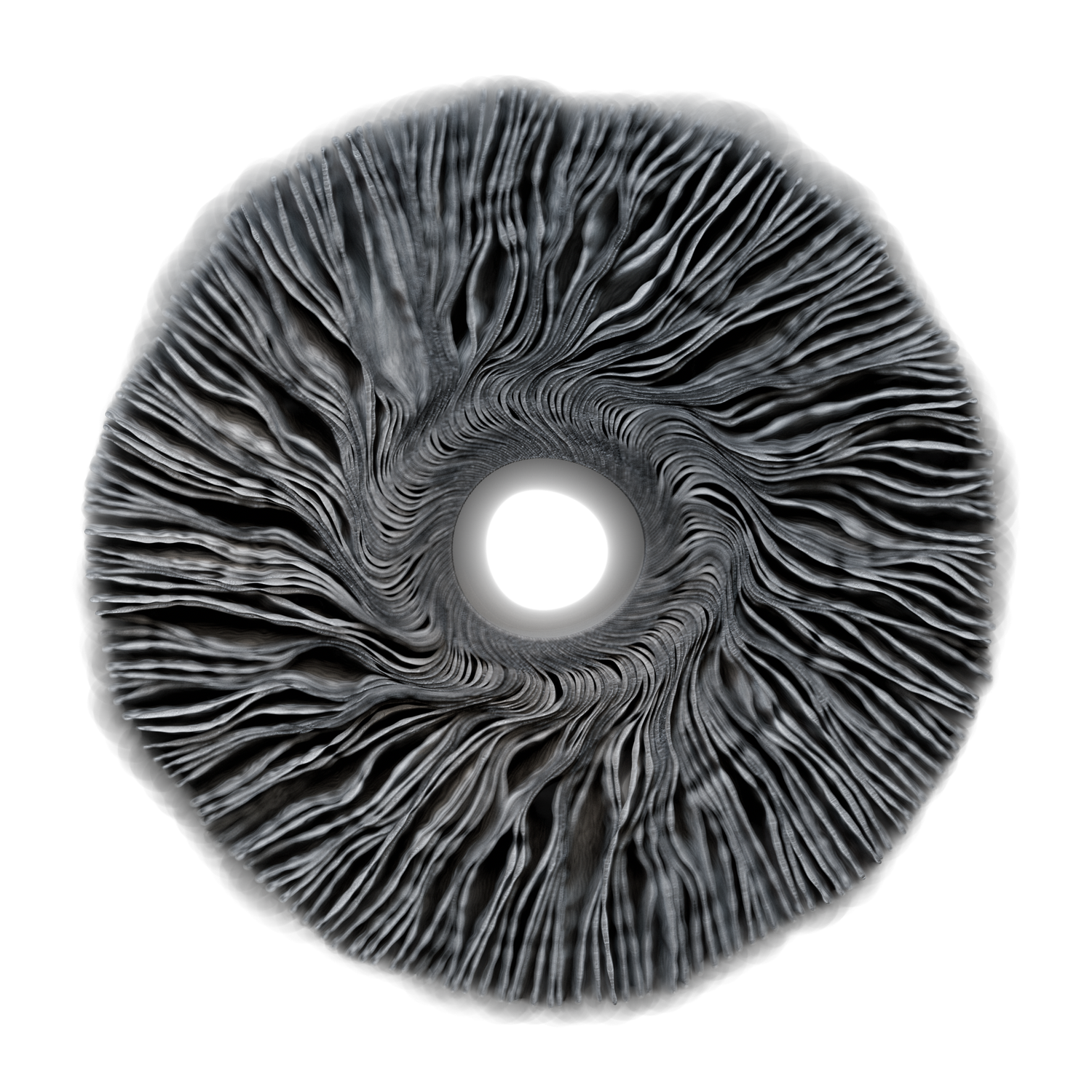
Psilocybin Visual and
Sensory Therapy
Hifa Cybe + Guilherme Todorov + VJ Speto + Célio Barros
2023 - sÃO pAULO, bRASIL
The artwork invites the viewer to reflect on the correlation between diving in water and diving into the unconscious, exploring the hidden layers of the human psyche and confronting one's own inner abysses.
Psilocybin was first identified and isolated in the late 1950s by Albert Hofmann, a Swiss chemist famous for discovering LSD. During the 1950s and 1960s, psilocybin, along with other psychedelics, was the subject of intense research for its therapeutic potential in a variety of mental health conditions, including depression, anxiety, and alcoholism. By the 1970s, research on psychedelics had largely ground to a halt due to the banning of hallucinogenic substances in many countries. However, beginning in the late 1990s and early 2000s, there was a resurgence of scientific interest in psilocybin. Researchers began to re-examine its therapeutic potential, particularly for conditions such as treatment-resistant depression, post-traumatic stress disorder (PTSD), and anxiety associated with terminal cancer.
The main motivation for this project is twofold: the social taboo against the use of the substance and the conflict with the pharmaceutical industry.
The social taboo surrounding psilocybin and other psychedelics has historical, cultural and political roots that have influenced public perception, legislation and scientific research on these substances.
The main one is stigmatization, precisely because media and government campaigns often portrayed psychedelics as dangerous and responsible for antisocial behavior and psychological harm. In addition, myths and exaggerations, such as using narratives without scientific basis, about the dangers of psychedelics, such as permanent brain damage or extreme behavior, contributed to public fear. In addition, in Brazil, we have an anti-drug policy that reinforces criminalization and stigma, hindering research and medical use.
As for the conflict with the pharmaceutical industry, we are initially impacted by the business model of this traditional industry that depends on medications that need to be taken continuously, generating recurring revenue. Psilocybin, on the other hand, can offer lasting benefits after just one or a few sessions, which can threaten business models based on chronic treatments. We also run into the issue of patents and intellectual property in how we treat psilocybin, which is a natural molecule and therefore cannot be patented in the same way as synthetic compounds. Pharmaceutical companies have less financial incentive to invest in something they cannot easily monopolize. We also have issues of stigma and legislation itself, because in addition to psilocybin facing significant stigma due to its association with the counterculture of the 1960s and its classification as a controlled substance in many countries, this creates regulatory barriers that make research and commercialization difficult.
The project began in 2021, during a period when artist Hifa Cybe, also known as Luiza Prado, was facing significant challenges with her mental health. At the time, Hifa was diagnosed with Mixed Schizoaffective Disorder, a condition that combines symptoms of schizophrenia and mood disorders. After years of trying various traditional treatments, Hifa felt discouraged and hopeless about finding an effective solution for her condition.
It was in this context of searching for alternatives that Hifa began using psilocybin, a psychedelic compound found in certain mushrooms, as part of her creative process. She began painting while under the influence of the substance, exploring the intense visual and sensory effects that psilocybin provided. These experiences not only profoundly influenced her artwork, but also offered a new perspective on her own mind and emotions.
Over time, Hifa noticed how psilocybin affected her perception, allowing her to see more vibrant colors, complex geometric shapes, and kaleidoscopic patterns that manifested in her paintings. Visual distortions and synesthesia, where the senses blend together, became an integral part of her artistic expression. These visual and sensory elements resulting from the use of psilocybin were carefully integrated into her works, reflecting emotional depth and a renewed understanding of her own internal experience.
Today, Hifa Cybe has been re-diagnosed, now recognized as having Autism Spectrum Disorder (ASD) and High Abilities. This re-evaluation of her condition has brought new approaches and treatments to her life. Hifa continues to use psychedelics, including psilocybin, as part of her treatment for anxiety. In addition, she uses CBD (cannabidiol), a non-psychoactive compound derived from cannabis, to supplement her therapeutic regimen.
In addition to her artistic work, Hifa is dedicated to the field of Biomedicine, with a special focus on Neuroscience. She is involved in research exploring the effects and therapeutic potential of psychedelic substances. Her personal and professional experience provides a unique perspective, combining her artistic practice with a rigorous scientific approach. Hifa seeks to understand how these compounds can be used safely and effectively to treat a variety of mental conditions, contributing to the evolution of psychedelic medicine.

